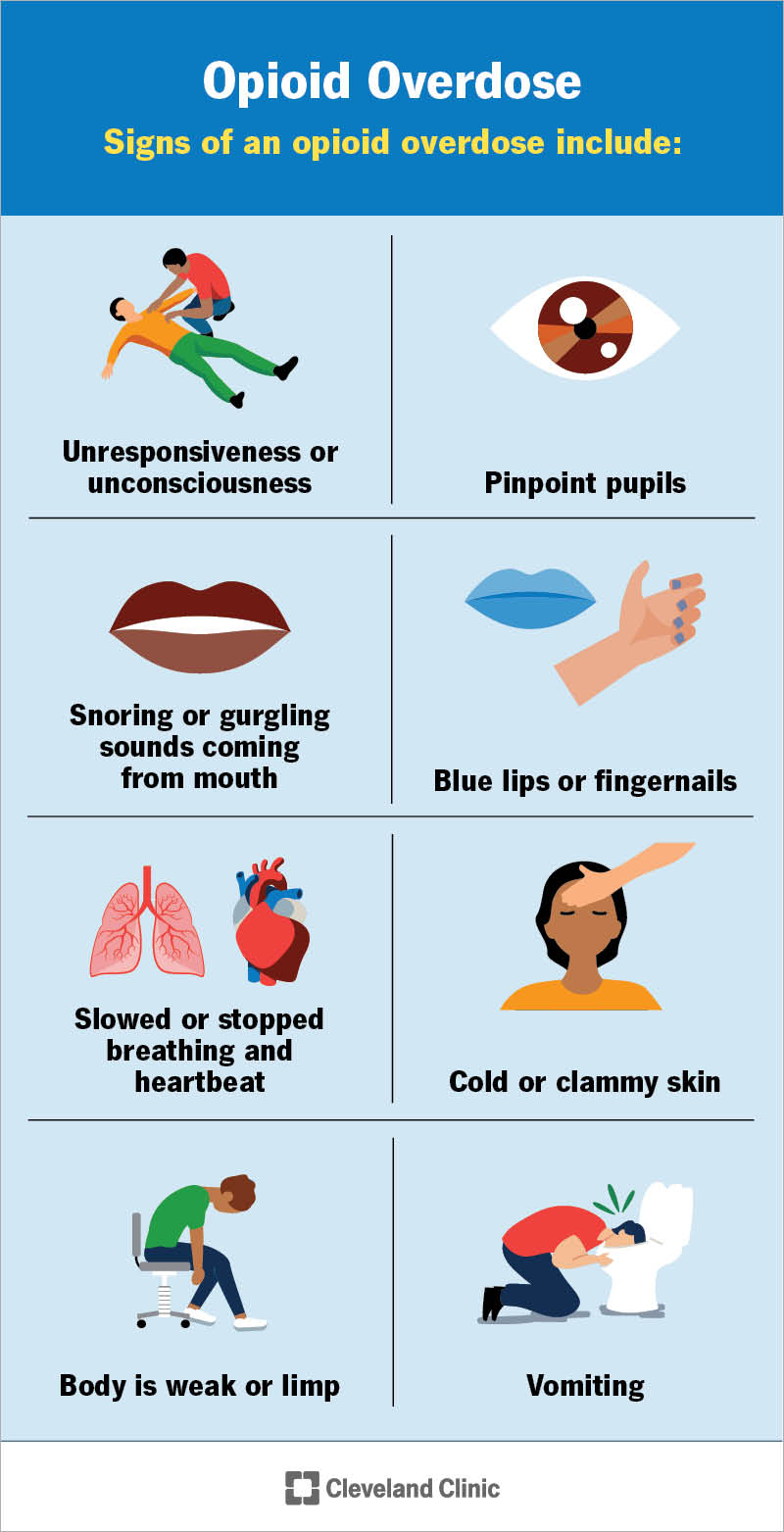Opioid Overdose Prevention & Response
What are Opioids?
Opioids are a group of drugs that include prescription painkillers like oxycodone, hydrocodone, codeine, and morphine, as well as illegal drugs like heroin and fentanyl. Many opioids are illegally made or mixed with other substances, which makes them even more dangerous.
All opioids affect the brain and body. They can cause addiction, overdose, and death—even when used for a short time.
Because opioids are highly addictive, anyone can become dependent on them. In fact, the risk of addiction to opioids can increase after just five days of use. Opioid use disorder (OUD) is a medical condition, like heart disease or diabetes. With proper treatment and support, it can be managed and recovery is possible.
How to Recognize Opioid Misuse in a Loved One
It can be difficult to notice when someone close to you is misusing opioids.
Many people with opioid use disorder may still appear to manage work, school, or family life. However, ongoing use often leads to serious challenges over time. A person struggling with addiction will keep using opioids even when it causes harm to their health, relationships, or daily life.
Common signs of opioid misuse include:
- Taking opioids in a different way than prescribed, such as using higher doses or using them for the feeling they create.
- Using opioids “just in case,” even without pain.
- Spending a lot of time thinking about or trying to get opioids.
- Noticeable mood changes or strong mood swings.
- Borrowing or claiming to lose prescriptions to get more medicine.
- Visiting several healthcare providers to get extra prescriptions.
- Making unsafe or risky choices that put themselves or others in danger.
If you feel that a loved one is misusing opioids, speaking up could save their life. A person addicted to opioids — or any substance — is much more likely to recover if the family doesn't ignore the issue. If you think your loved one may be addicted to opioids, talk with their healthcare professional right away. Together, you can come up with the best next steps.
Signs of an Opioid Overdose
It may be hard to tell if a person is experiencing an overdose. If you aren’t sure, it’s best to act – you could save a life.
Signs and symptoms of an opioid overdose include:
- Weakness or limp limbs
- Pale, blue or purple lips and fingernails
- Cold and clammy skin
- Slowed or stopped heartbeat and breathing
- Snoring or gurgling sounds coming from the mouth
- Tiny pupils (black center of eye)
- Unresponsive (can’t wake up)
- Vomiting
Responding to an Opioid Overdose
If you think someone may be experiencing an overdose, its important to act fast:
- Try to wake the person up
- Check for a response (Is their chest moving? Do you hear breathing?)
- Call 911 immediately (see Good Samaritan Law below)
- Give naloxone (Narcan), if available
- Begin rescue breathing or follow dispatcher instructions
- Repeat naloxone, if needed
- Lay the person on their side to prevent choking and wait for first responders. Stay with them until emergency services arrive
Oregon’s Good Samaritan Law
The Good Samaritan Law protects those seeking medical help in drug related overdoses.
If someone is overdosing and you call for medical help, you cannot be arrested or prosecuted for:
- Possessing drugs or drug paraphernalia
- Being in a place where drugs are used
- Violating probation or parole because of drug use or possession
- Outstanding warrant because of drug use or possession
- Administering the overdose reversal medication
Naloxone can Save a Life
Naloxone, also called Narcan, is a medicine that can help someone who is having an opioid overdose.
Naloxone is small, easy to carry, and simple to use. It comes as both a nasal spray and injectable shot, and anyone can administer it. According to the Oregon Health Authority, when bystanders are trained to administer naloxone for opioid overdoses, survival rates increase to 83% or more. You cannot harm someone using naloxone if they are having a medical emergency other than an overdose.
How to Use Naloxone:
- Place tip of nasal spray in either nostril until your fingers touch the bottom on their nose
- Press the plunger firmly to give a dose
- Check for breathing
Where to Find Naloxone in Crook County
Naloxone is available to purchase at your local pharmacy and at Crook County’s Syringe Service Program, which provides free education, safer use supplies, and overdose prevention supplies, including Naloxone, to community members aged 18 and older.
Use this map to find free Naloxone or pharmacies that carry it for purchase or with a prescription. The map also includes information about local prescription drug and sharps disposal locations. If you are an organization that offers these services and do not see them on the map, please contact hmorris@crookpublichealthor.gov.
Recovery Resources
Recovery Network of Oregon is a mobile app and a web directory of support services, providers, peers, and meetings designed to assist people with their recovery from drugs and alcohol. Find the resources you need or talk to a peer for help.
Additionally, Crook County’s Syringe Service Program (SSP) offers free education, safer use supplies, and overdose prevention supplies, including Naloxone, to community members aged 18 and older.
Recovery Resources
Recovery Network of Oregon is a mobile app and a web directory of support services, providers, peers, and meetings designed to assist people with their recovery from drugs and alcohol. Find the resources you need or talk to a peer for help.
Additionally, Crook County Health Department's Syringe Service Program (SSP) offers free education, safer use supplies, and overdose prevention supplies, including Naloxone, to community members aged 18 and older.
For Community Partners
Interested in receiving a free Naloxone or safe disposal training? Click this LINK to sign up.

